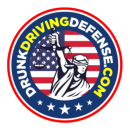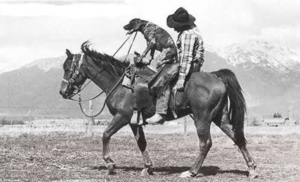Copyright 2016 – William C. Head, Atlanta Georgia – Atlanta DUI Lawyer – All Rights Reserved
(Adapted from Chapter One of Mr. Head’s DUI Book, The DUI Book, ©2006)
The Invention of Motorized Vehicles and Improved Highways Launched our Nation’s Drunk Driving Laws
Drunk driving history begins even before cars were invented. From the earliest days of wheeled transportation (or even when we only had four-legged beasts of burden as our “vehicles” for getting from one place to another), intoxicated “operators” have chosen to drink excessively and then try to travel to a new destination. An intoxicated cowboy who rode his horse back to the ranch after playing poker and swigging whiskey at the local saloon seldom caused anyone a problem, but the potential to pose a danger to others certainly existed. If he drunkenly raced through the dirt streets of Dodge City on his horse while pedestrians tried to walk over to the General Store, an innocent person could be killed or seriously injured by such drunk riding conduct.
In those days, however, no laws existed for such drunk actions of citizens, whether on a horse, or driving a stagecoach with passengers and packages being delivered. Drunken conduct while controlling a team of horses, riding a large, in America at that time were dirt or mud. In fact, the phrase “drunk driving” had never been used 150 years ago. Similarly, the phrases “driving under the influence,” [DUI] “driving while impaired” [DWI] and related terms like “designated driver” were also not part of the national vernacular.
Consuming alcoholic beverages to excess was certainly not a new development in the late 1800s. Alcohol has been part of world culture since the Neolithic period over 10,000 years ago, and has been widely consumed as either an alternative to water (which was dangerous to drink in many areas), or as a medicinal ingredient. Millions of men and women have been drunk and disorderly across the many millenniums between the start of consuming fermented beverages until today. In America, alcoholic beverages are ubiquitous at sporting events, concerts, microbreweries, wineries, distilleries, grocery stores, restaurants and bars, in pharmacies (in a few states) and at specialty stores for which alcohol is the central product for sale.
Ethyl alcohol is today — by a wide margin over all other substances combined — the most common date rape drug in the world. Alcohol is also the single most common denominator for all persons (2 million plus) incarcerated in America’s prisons, and this applies to both violent and non-violent inmates. It is a chemical with a distinctive and unique molecular structure, as shown below. Alcohol is a poison and, in sufficient quantity, is lethal to humans.
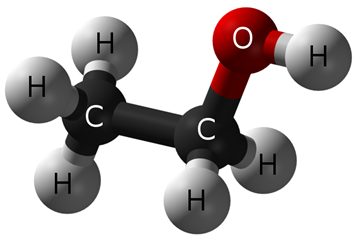


Motorized vehicles were invented in America and popularized starting 120 years ago. As increasingly-fast vehicles began to be produced in the early 1900s, this development caused the driving public to demand better highways. As these two historic developments occurred in tandem, drunk driving increasingly became a topic of national discussion. [Source: http://www.ancient-origins.net/human-origins-science/alcohol-medicine-through-ages-001238]
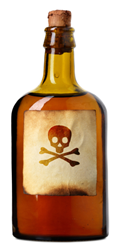


The history of drunk driving in America has been long, varied and is still evolving. In a little over 120 years, America has gone from horseback to producing ultra-fast production cars capable of reaching 200 miles per hour directly from the showroom floor. For 105 years, we have been seeing drunk driving laws get enacted, changed and modified, as our Government gets pushed by safety advocate groups to clean up the carnage caused by impaired drivers on our roadways.
New alcohol breath testing and blood testing technology was later invented and then improved over the next 75 years. Since 1983, when President Ronald Reagan focused the federal government’s attention on driving safety and pushed through federal legislation which permitted states to apply for federal grant money to be used for interdicting drunk driving, the number of DUI arrests steadily rose to impressive levels approaching 2 million annual arrests. These lofty numbers stayed above 1.5 million arrests annually for nearly 20 years, starting in the late 1980s through the mid-2000s, but have recently tumbled down to 1988 levels, as police department budget cutbacks and reduced federal enforcement funding efforts have seen a sharp decline in drunken driving arrests. In 2014, fewer than 900,000 DUI-DWI arrests were made in the United States, about one-half the number from 20 years earlier.
Indeed, the fascinating and remarkable history of noteworthy Americans and others being drunk throughout our country’s history has been such a topic of interest that in 2013, a television channel, Comedy Central, created a new TV show called “Drunk History” that regularly features interesting facts and historic events involving alcohol from our nation’s past. Other television programs (such as D.U.I., from the TLC channel in 2011) have tried to gain traction while talking about drunken driving arrests or other drunken behavior captured on police videotapes, but the theme of that show did not attract regular viewers.
This drunk driving history article is unique in its review of the historic progression of this segment of criminal laws in America, and to point out the roots and origins of our current driving under the influence laws. Unlike other drunk driving articles that focus on statistics, this story is about how America went from not having any “drunk driving” laws at all a century and a half ago, to passing Draconian legislation that exacts harsh driver license suspension or revocation punishment, as well as imposing severe criminal sanctions.
Today, drinking and driving and other types of impaired driving (like DUI-drugs) are very much a part of daily life in America. The practice of criminal law in America has seen a sub-specialty of “drunk driving lawyer” emerge from the general category of criminal defense attorneys. However, as will be revealed below, aggressive efforts to detect and interdict impaired driving crimes now have fallen to the wayside in many states, as money available to state and federal governments for drunk driving interdiction has shrunk. Like the failed war on drugs, our laws on drunk driving have proven to be too costly to maintain aggressive enforcement at previous levels.
New Motorcar Technology Caused a Clash Between Horses and Horseless Carriages
After the days of the horse-drawn stagecoach and carriage passed, and steam-powered cars, electric-powered vehicles, gasoline-powered automobiles and diesel-powered trucks and locomotives engines began to emerge, the risk posed by drunk drivers became a part of sporadic newspaper accounts and local gossip. This type of “buzz” eventually led to State legislators in America starting to take a look at enacting laws to make drunken driving a crime. Such laws had been enacted in England more than 35 years earlier, where crowded London streets had already been the first location of drunk driving accidents, including deaths from drunken driving crashes. So, London, England was the first place on earth to have a drunk driving death caused by a motorcar.
Since motorized vehicles were being built all across America from 1893 to 1913, and the noisy, and smelly vehicles were being driven next to people riding horses or traveling by horse-drawn carriages and buckboards, the clash of animals and mechanized cars began. Because most early 20th century dirt roads were fairly narrow, rough and rutted, treacherous highways were the greatest cause of motor cars breaking down due to a broken wheel, or broken axle, or worse.
A few cities utilized gravel and shredded wood ships to smooth out the dirt roads, to try to minimize quagmires, once rain had soaked the dirt or clay surfaces. In swampy areas, corduroy roads made of logs laid beneath the road’s surface, side-by-side at a 90 degree angle to the path of the roadway, before filing any cracks with dirt or mud so that large-diameter, spoked, wooden wheels could roll across the top surface without sinking in. This type of road construction was very laborious, and sacrificed trees which would have to be replaced in several years. Any gaps between the parallel logs also posed a dangerous threat to an animal’s hooves and legs, despite the benefit of such road construction that enabled horseless carriages to move at a faster pace in wet or boggy areas.
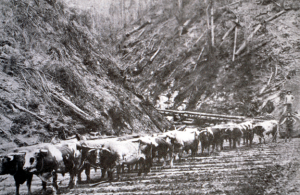


From Dirt Paths to Paved Highways – Speeding Drunk Drivers and Drunk Driving Accidents
The faster motorized cars on these brutal roads passed the slower moving horse-drawn traffic with little regard for the safety of the frightened horses, buggy passengers, donkeys or cattle and any horseback riders powered by these domesticated animals. The number of incidents of impaired driving in these open-carriage motorcars on our highways increased, and without seatbelts or any other safety restraints within early motorcars, injuries and deaths to motorcar drivers and passengers mounted quickly. Initially, most “vehicle collisions” were between a motorcar and a horse-drawn wagon or horseback rider.
The early models of steam-powered motorcars in the late 1880s were virtually a rigid buckboard with the engine, transmission and steering assembly underneath the wooden seats (except for the steering rod that was positioned for the driver to control the path of the vehicle). Due to the heat build-up over time, this made for a very hot, smelly ride, especially in summertime.
Like the early airplanes, anyone operating one of these early engine-powered vehicles was in uncharted waters, and fatalities would have been much higher, except for the dismally slow speeds of early motorized carriages. Speeds of three to eight miles per hour were the norm. The first cars had huge, wooden spoke wheels, which were often wagon wheels adapted from a current stagecoach design, with almost no shock absorption. With no steering wheel, until later models instituted this steering mechanism, the vehicles were often poorly-controlled, rambling missiles on the roughshod roadways of the day.
The first “horseless carriage” built in America was run by steam power, and was purportedly built by Henry Nadig of Allentown, Pennsylvania in 1889. Notice how it closely resembles a horse-drawn buckboard or wagon, in many respects. Instead of reins for a team of horses, it had a crude steering handle that was attached to the front wheels.
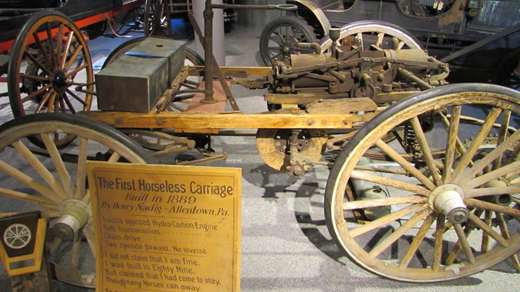
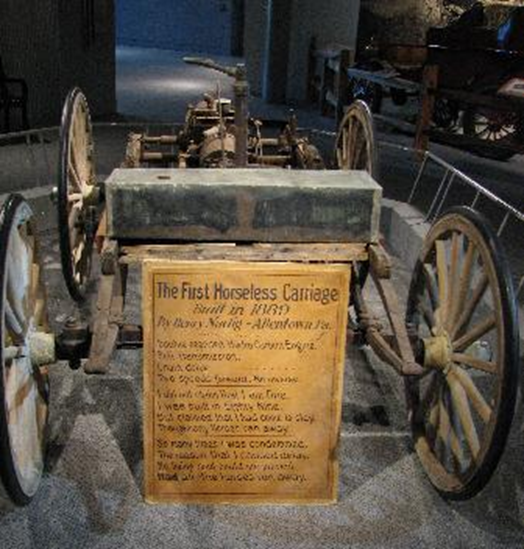
The first gasoline-powered vehicle in America was the Duryea, produced in 1893. Produced by the Duryea Brothers, Frank Duryea also holds the distinction on American history of winning the first organized race of horseless carriages in the country, from Chicago to Springfield, IL. The top speed of Duryea’s one cylinder car was 7.5 miles per hour at the 1893 race. The prize for winning the race: a winner’s purse of $2000. In today’s dollars, the “buying power” of the prize money collected in 1893 by Duryea was equivalent to $54,300 in today’s inflated dollars.
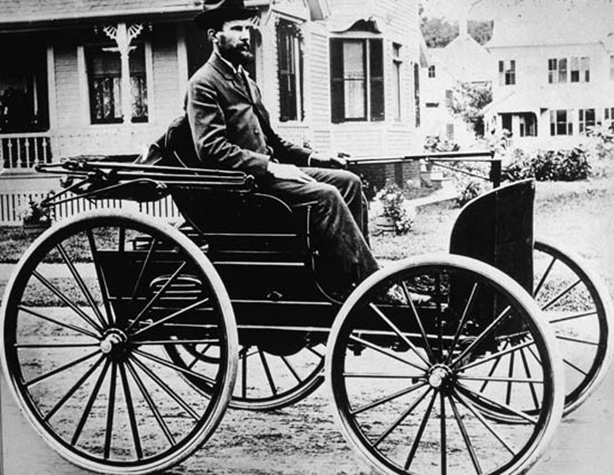
Following Duryea’s first race, the sport of racing cars was in full swing. Other men sought to set speed records for crossing the United States in motor cars in the shortest amount of time. Racing today is a worldwide sport, and billions of dollars in advertising revenue and admissions prices are at stake.
The Duryea brothers had been successfully building bicycles prior to seizing on their opportunity to make the first gasoline-powered motor car in 1893. Their automobile manufacturing company was short-lived, as other better organized and better funded vehicle manufacturers like Ford, Dodge, Cadillac, Oldsmobile and others emerged as the national leaders.
As the popularity and availability of cars in America rose in numbers, the motoring public began to push local lawmakers for better, smoother road surfaces. Soon, a massive national rollout of road construction projects was underway just prior to World War I. Asphalt had not yet been perfected, so concrete roads were the first impervious type of surface used. The initial roads started in highly populated cities (the first place was in Detroit, Michigan in 1909), and then these city roads later were connected to other big cities by intrastate and interstate highways. [Source: https://en.wikipedia.org/wiki/M-1_(Michigan_highway)]
By the turn of the century, the hype over new motorcars powered by steam or petroleum had been a recurring news item. Businessmen seeking to gain a competitive advantage in the motorcar businesses organized races, but also decided that the best way to create buyers for their vehicles was to have a an Automobile Show. Below is a photograph from the first United States Automobile Show, held in the year 1900 at Madison Square Garden in New York City, New York.
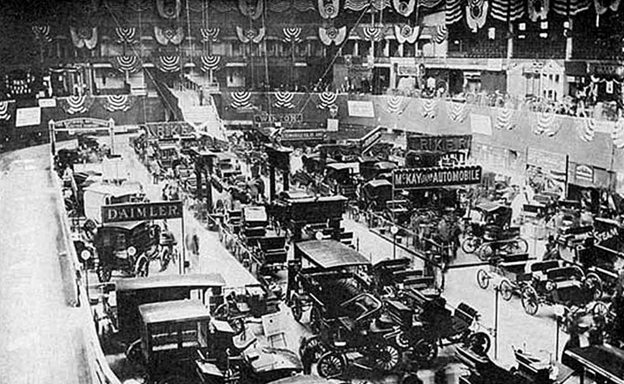
The improved, smoother roadway surfaces and tires with inner tubes that came into use on cars around 1911, led to the speeds of horseless carriages greatly increasing. Pneumatic, bias ply tires then were made starting in 1915, and such inventions assisted America’s travelers to get to their destinations faster and faster. With faster speeds came more deaths when collisions occurred.
England passed the first drunk driving laws in 1872 to deal with an increasing number of drunk driving accidents.
In London, the first vehicle death from an automobile-pedestrian collision (but not involving a drunk driver) was reported in 1896 and sounded the public alarm about horseless carriages and the safety risk they posed:
“On 17th August 1896 Bridget Driscoll was killed in Crystal Palace by a horseless carriage traveling at 4 m.p.h. This was the first reported traffic fatality to occur in Great Britain, and the start of a problem that has now grown to epidemic proportions.”
An English law passed in 1872, when steam powered contraptions were first introduced, first made the operating of a steam-powered vehicle while intoxicated illegal and punishable by a prison sentence in Great Britain. From this inauspicious beginning approximately 20 years before “motorized cars” were introduced in America, an increasing number of news reports of impaired driving cases began to appear in periodicals.
In 1904, the first reported drunk driving news article appeared concerning automobiles and a drunken driving accident. The Federal Highway Administration (FHWA) estimated that 172 people died in America in all motorized vehicle crashes for the year 1904, with several cases involving drunken drivers. At this time, though, no state in the United States had yet passed a drunk driving statute.
[Source: https://pmc.ncbi.nlm.nih.gov/articles/PMC3256806/]
New York becomes the First State to enact a Drunk Driving Law in America
In 1910, New York became the first state to enact “drunk driving” laws. Dozens of other states quickly followed suit, with states such as New Mexico (in 1919) providing steep monetary fines up to $1,000 and one year in jail on a DUI-DWI conviction. As a frame of reference, a brand new Ford Model T cost about $500 in 1919, and an average year’s income for many families in 1919 in New Mexico did not equal $1,000! In today’s economy, after adjusting the value of a $1,000 fine in terms of 1919 spending power, accounting for inflation, that would be the equivalent to $14,232.00 in 2016. These drunk driving penalties were extremely severe, if imposed at the maximum fine amount.
A New Law Enforcement Tool for Helping to Prosecute Drunk Drivers in America – Breath Testing Devices are Invented
In 1937, Dr. Glenn C. Forrester, discovered and patented a process for capturing alcohol from a breath sample. Ultimately, after buying the rights to other similar technology in Europe, this initial invention spurred the idea for building a portable breath tester that could be used as a roadside instrument in collecting evidence in suspected drunk driving cases. Because breath testing is an indirect measurement of breath ethanol (alcohol) to try to correlate to the person’s true blood alcohol concentration (BAC), this development was significant in the history of instrument-related alcohol determination. Breath testing was faster to complete, more convenient than going to a hospital to draw blood, and far less costly than blood tests for determining a driver’s alcohol concentration.
In 1938, Professor Rolla N. Harger, chair of the Department of Biochemistry at the Indiana University School of Medicine, invented the first crude, analytical breath testing device, which he named the “Drunkometer®.” This device was the first machine to be purchased and used in multiple states.
The early breath-testing device required the person suspected of drunk driving to blow into a balloon (to regulate the size of the collected breath sample). The exhaled breath in the balloon was then passed over chemicals that changed color in the presence of molecules of alcohol. The extent of the color change, if any, provided a very rough estimate of a blood alcohol content (BAC) by measuring the photoelectric cells. This revealed the approximate amount of alcohol in the collected sample.
In 1939, following Dr. Harger’s invention, Indiana became the first state in America to enact laws that set a presumptive alcohol impairment at 0.15 grams percent. The concept of DUI per se laws did not exist at this time, but the Indiana law created an inference of impairment if the arrested drunk driver submitted to testing, and the “number” produced was 0.15 grams percent or more. Other states did not immediately act to implement similar laws until seven years later, in a national study published in 1946, a government agency suggested that similar laws be written in all states.
Shortly after Harger launched his new machine, another scientist released a second-generation machine. Dr. Glenn C. Forrester of St. Louis, Missouri, was working on a similar device, which he called the “Intoximeter®.” The 1937 research was behind the Intoximeter brand of devices. Dr. Forrester incorporated Intoximeters, Inc. in 1945.
After World War II, Michigan instituted the first statewide breath-testing program using the early model of the Intoximeter®, and this St. Louis, Missouri company currently makes both portable and evidential (tabletop) breathalyzer machines and breath testing instruments. In March of 2013 the company bought out the Datamaster company’s DMT technology from National Patent Analytical Systems, Inc., which had previously been based in Mansfield, Ohio, thereby reducing by one the number of breath test manufacturers in the United States.
The Federal Government begins the push for Setting BAC Level Standards for all States
In 1946, the first national highway safety conference was conducted by the National Committee on Uniform Traffic Laws and Ordinances. The ever-increasing number of vehicles on the highway following the end of World War II was alarming. Due to post-war production of all types of consumer goods, such as automobiles, and full employment to re-start the economy, everyone now wanted a car of some type.
With a jump in the number of cars rolling off assembly lines, a staggering number of highway accidents involving injuries and deaths were being recorded. Although drunk driving accident statistics had been kept for nearly five decades, precise numbers for drunk driving statistics in America were not being separately compiled.
The federal study recommended setting a standard level for presumptive blood alcohol impairment at 0.15%, so that states would have some “target” in determining when a driver was presumably impaired. This “number,” incidentally, had been recommended in 1946 as the correct alcohol impairment standard by the American Medical Association (AMA). The AMA determined that this was the “accepted” level of intoxication based upon their research. More about the AMA and this “research” in 1946 will follow below.
New York again leads the way with America’s First Implied Consent Law in History
In 1953, New York was the first state in America to pass a new type of law aimed at forcing drunken drivers to submit to blood, breath or urine tests, if an officer who had stopped a car had sufficient evidence to support a reasonable belief that the driver was impaired by alcohol. Laws of this type became known as “implied consent” laws. The concept is simple: Police will advise the suspected drunk driver that his or her driver’s license will be suspended if he or she refuses to submit to testing to determine the driver’s BAC level. This type of law was being enacted as a “legal coercion” method, to assure that the Police were able to give the Prosecutor solid evidence of driving while intoxicated so as to procure a DWI conviction. If a suspected drunken driver refused to blow into a breath device, no significant penalty followed that behavior.
Today, the phrase “implied consent” or “informed consent” is used in virtually every state. The theory behind the New York statute was that any person who used the highways of New York “implicitly” consented to giving his or her permission for an alcohol sample to be collected for use as possible evidence at trial. Implied consent laws were based upon a legal fiction, however, because drivers had not, in fact, actually given such consent. Modern driver’s license laws in most states now include this “notification” of the requirement to consent as part of the application for a driver’s license.
An Implied Consent Refusal became Grounds for Getting a Forcible Blood Sample
A refusal to submit to breathalyzer testing or blood testing was possible under New York’s law and similar laws of other states, but the driver would have his or her license suspended or revoked for 12 months for not submitting. Today, 100% of the jurisdictions in the USA have such laws with varying periods of license suspension or revocation for any refusal to submit to testing. Increasingly, however, more and more states (NV, MO, TX, CA) had begun to no longer permit a person to refuse to be tested, and resorted to brute force to obtain a blood or urine sample when a “breath test” was initially declined. In previous years, news reports of individuals dying while resisting being stuck with a needle showed very clearly where police priorities were for obtaining evidence in DUI-DWI cases.
The right to obtain a forcible blood draw from an unwilling driver in a garden-variety DUI-DWI case has now been curtailed by the United States Supreme Court, in the case of Missouri v. McNeely, from 2013. So officers who want a non-consensual blood sample now have to contact a judge to get a search warrant for blood, based upon a sufficient showing of probable cause to believe that the driver was intoxicated, and to show why the evidential blood test was needed.
Other states, through either statutory law or state constitutional law, have ruled that it is impermissible for officers to use force to obtain the suspected drunk driver’s blood sample, but all states routinely put the driver in jail — for some period of time — due to his or her “refusal” to give a sample. The time required to be spent in jail is in place to prevent a drunken driver from getting out of custody and back behind the wheel of a motor vehicle.
A new Breath Test Device, the Breathalyzer®, dominates Breath Testing Technology
In 1954, Robert Borkenstein of Indiana invented the Breathalyzer® breath testing instrument. This was a third-generation breath testing device. This breath machine was a significant improvement over all prior designs, and dominated sales of such devices in the United States for nearly 20 years. The new breathalyzer was simpler for police to use, and cost less than other devices to maintain.
Borkenstein, a former Indiana state trooper, became one of the best-known and loved figures in alcohol-related highway safety circles. In 1962, he was appointed chairman of Indiana University’s newly-formed Department of Police Administration. Indiana University bestowed an honorary doctorate degree to Borkenstein. He also started a well-known national training program on alcohol testing and the science behind the testing. The “Borkenstein” course, which is still attended in Bloomington, Indiana, by over one hundred state forensic scientists and police officers per year, continues today. Dr. Borkenstein died in August of 2002 at the age of 89. {Source;
Over the last 75 years or so, there have been at least six generations of evidential breath alcohol testing instruments. Some current breath alcohol test instruments have dual wavelength testing capabilities and breath temperature detection and adjustment technology available. The idea behind “improved” technology is that these devices are more precise at estimating a person’s true blood alcohol level, without additive error (as a result of factors or conditions that increase the reported BAC level on the device) from a variety of contamination or additive sources, including reducing the chance for operator error.
Our National Highway Program gets a Presidential boost, creating our Interstate Highway System
In 1956, President Dwight D. Eisenhower convinced Congress to authorize building the Interstate Highway System. Inspired by the German Autobahn when his troops occupied Germany during World War II, Eisenhower understood the immense value to national commerce and travel that such a system would create. This highway system has created changes in mobility for Americans that was unimaginable fifty years earlier. In 2016, nearly 50,000 miles of Interstate Highways exist in the United States, and about one-fourth of all vehicle miles traveled in America happen on an Interstate Highway. Only China has more miles of nationally-funded roads. [Source: https://en.wikipedia.org/wiki/Interstate_Highway_System]
One of the immediate repercussions of these high speed superhighways was increased vehicle speeds on the smoothest and straightest highways in America. No longer do we have many dirt roads in America, and these new Interstate roadways have enabled vehicles to move much faster, with limited access points and few traffic control devices. Drunk driving accidents on these interstates often involve fatalities, as a result of higher impact speeds, particularly with head-on collisions.
Other drunk driving statistics relating to DUI-DWI enforcement reveal that a transient drinking driver who has accumulated multiple DUI-DWI convictions in various states now has to be tracked via a national database of all state driver’s license administrations of the 51 offices of DMV-DPS-BMV-DDS-SOS (driver’s license issuance) offices. A whole new body of law has grown out of administrative license suspension and administrative license revocation laws, and the related litigation over a driver’s right or ability to get driving privileges restored, after a drunk driving conviction or administrative suspension or revocation. Several states have now enacted laws that create a lifetime loss of the right to have a driver’s license after a fourth (or, in some states a third) drunk driving conviction.
The Federal Government pays for and collects data from Drunk Driving Statistics to Publicize DWI-DUI Fatalities
One of the ways that the federal government justifies spending money is to accumulate statistics to bolster claims of “need” to spend money. So, various departments of our government can either ask for proposals for bids, or possibly be queried by an independent researcher about funding for some public interest pilot study or to update statistical analysis. In the field of drunk driving and other serious driving behaviors like aggressive driving, or the number of drugged driving arrests based on new medical marijuana laws in some states, the Department of Transportation is the federal agency that usually has the lead role in putting out bid requests.
A detailed study of accidents related to alcohol use was conducted in 1964 in the so-called “Grand Rapids” (Michigan) Study. Dr. Borkenstein oversaw this research project, which was funded by the federal government. The focus of Borkenstein’s review of prior Operating While Intoxicated (OWI) arrests in Michigan, was the causal relationship between a higher incidence of motor vehicle crashes and drunk driving deaths when the OWI suspect had a high blood alcohol level. So, the correlation between elevated BAC (blood alcohol concentration) levels and fatality accidents was explored by this study.
The report showed a significant increase in fatalities for drinking drivers who had a blood alcohol content of 0.08 grams or more, and that the higher the BAC, the greater the percentage of deaths in DUI-DWI collisions. This drunk driving fatal accident connection set in motion state and federal legislative momentum to start lowering the acceptable state DWI-DUI laws BAC alcohol levels for drivers. The first two states to enact a BAC level lower than 0.15% for their respective states were Nebraska and New York in 1972. The new standard at that time was generally set at 0.10 grams percent, but some states began enacting a 0.08 BAC standard within a decade after this study. A few states, like Georgia, initially only dropped the BAC level to 0.12. Later, Georgia dropped the number to 0.10, and then to 0.08 in 2001.
By the late 1960s, the Department of Transportation and the National Highway Traffic Safety Administration (an agency within the DOT) had begun showing legislators and the public the drunk driving statistics (and graphic crash photographs) of the staggering number of deaths they claimed were attributable to traffic crashes. The emphasis by DOT officials was on alcohol-related crashes in particular. A few drunk driving laws were passed setting a lower alcohol level for drinking drivers, but these laws stipulated that a 0.10% BAC only created an inference that an individual might be intoxicated. The charge of intoxicated driving was still rebuttable (contestable) by the accused drunk driver.
One public health scientist, Patricia Waller, summed up the prevailing nonchalant attitude of the American public in the 1970s by observing:
“Drunk driving was considered more or less a ‘folk crime,’ almost a rite of passage for young males. Most adults in the United States used alcohol, and most of them, at some point, and drove after doing so. This is not to say they drove drunk, but many of them undoubtedly drove when they were somewhat impaired. Although the law provided for fairly harsh penalties, they were rarely applied. Upon arraignment, defendants would ask for a jury trial, and because drinking and driving was so widespread, juries almost invariably acquitted the defendant, thinking, ‘There but for the grace of God go I.’”
Thanks to active intervention by the federal government and using inflated reports of death and mayhem on our highways, a substantial push was made by the federal government to force states to fall in line with enacting new laws with lower BAC levels for presumptive (DUI per se) alcohol impairment. Current television and print media news reports of accidents, particularly those involving suspected drunken drivers, dominate the police blotter and broadcast news reports of most media outlets across America. Moreover, any celebrity or politician charged with or convicted of drunk driving is on the front page of most newspapers and online search results. This notoriety from celebrity DUI cases can follow the person for a half century or longer. A DUI-DWI traffic accident with a fatality is far more likely to make the evening news today than a child molestation case.
A new type of DUI-alcohol law gets enacted – Driving under the Influence of Alcohol per se
Not satisfied with the “inference” laws being sufficient to obtain convictions, in 1972, Nebraska and New York passed the first laws stating that driving with a 0.10 blood alcohol content, if the jury believed the breath test results, was a separate crime from impaired driving (intoxicated driving). These DUI-DWI laws are sometimes called an “illegal per se” law or “DUI per se.” {pronounced DUI “per say”}.
When talking about this kind of DUI-DWI law, the phrase “driving while having an unlawful blood alcohol level” is more descriptive, since the prosecutor need not prove “driving impairment” through symptoms like slurred speech or being unsteady on your feet, or based upon field sobriety test evidence. This type of new law would permit a suspected drunk driver who was stopped at a DUI checkpoint to be arrested for driving while impaired without the usual litany of symptoms of DUI or field sobriety tests being done.
No evidence of impaired ability to drive is needed to support a DUI per se conviction under such laws. These laws were based on the fact that at 0.10%, any person, regardless of tolerance to alcohol, was (as a matter of state “public safety” policy) significantly less capable of operating a motor vehicle, and therefore posed a danger to society. By 1979, twelve states had set an illegal per se limit, all of them at 0.10% except New Hampshire which initially set that state’s per se limit at 0.15%.
By use of withholding federal highway finding, the DOT and NHTSA was able to force many national changes of state DUI laws. One change in the 1990s was to compel all states to make age 21 the age of majority, and the uniform minimum drinking age. In 2000, President Bill Clinton pushed through a bill that caused all states to either lower their per se DUI-DWI level to 0.08%, or lose federal highway money.
Administrative License Suspension Laws target Driver’s License Suspension or Revocation before the Criminal Case is Resolved
In the 1970s, the DOT, through NHTSA, pushed for other, immediate civil driver’s license sanctions of DUI-DWI-OWI drivers, by suggesting that new administrative license suspension (or administrative license revocation laws) be enacted by all states to take away (or greatly restrict) the right of an accused drunken driver to continue to drive before the criminal case gets resolved. This move was justified by the federal agency, saying that it is NOT double punishment for one event, but a safety measure to prevent a possible problem driver from reoffending.
In 1976, Minnesota then became the first state to enact an “Administrative License Revocation” law. Also called “Administrative License Suspension” laws in some states, this type of law was recommended by NHTSA as a means of suspending or revoking an accused DUI-DWI driver’s driving privileges before the arrested DUI driver could reach trial on the underlying criminal charges. The concept for these laws was that any person who submitted to testing and rendered a test result equal to or greater than the state’s presumed “impairment” level (the State’s DWI per se limit) would be summarily suspended from driving or have his or her driver’s license revoked or restricted for a period of time. This type of ALS or ALS license suspension was added to the existing implied consent suspension or revocation that was imposed when a driver refused to be tested.
These proceedings were civil or administrative in nature, to avoid double jeopardy concerns. Now, whether a driver refused testing and suffered a separate implied consent driver’s license suspension or revocation penalty of loss of license for not taking the State’s test, any driver who submitted and had a result equal to or greater than the state’s DUI per se legal limit would also suffer a suspension or revocation. Damned if you do and damned if you don’t.
Neither the press nor the public paid much attention to all the new activity of the dozen or more states that were passing new laws setting administrative license per se DUI limits. This lack of concern was reflected by a two-inch article printed in the October 16, 1979 edition of the New York Times, which noted that an all-time record number of people had been killed in “road accidents” in 1978 — 50,145 people. Be aware that these numbers are inflated, because they include ANY accident where ANY person — including only the dead person and not just the arrested driver, even if the deceased was a pedestrian — if he or she had a measurable level of alcohol. So, to break it down, if any person in the “incident” had a 0.01 or more BAC, this was counted as a drunk driving accident.
In 1980, the National Highway Traffic Safety Administration published its first “issue paper” on illegal per se, and the benefits of using preliminary breath testing devices to screen suspected drunk drivers at the roadside. NHTSA also proposed model language for both types of alcohol-based drunk driving laws so that states could easily adopt new laws embracing these changes. A huge shift in state governments’ attitudes as well as the federal government’s attitude toward “drunk driving” and accidents was about to occur, triggered primarily by some grieving mothers—and fathers—who spoke long and loud about the embarrassing lack of national attention being paid to “problem” drivers and DUI-DWI crashes causing serious injuries and fatalities.
The Ascendancy of Mothers Against Drunk Driving and other Organizations Against Drunk Driving, like SADD
A California woman by the name of Candace (Candy) Lightner lost her 13-year old daughter, Cari, to a drunk driver in May of 1980. Cari, a pedestrian, was struck from behind and killed as she walked to a friend’s house. She immediately started publicly questioning how this repeat offender drunk driver was still licensed to drive.
After her heartbreaking story became national news, Candy Lightner soon heard about Cindy Lamb, a Maryland mother who — six months before — had survived a devastating accident with a drunk driver who struck her vehicle head-on while traveling at an estimated 120 miles per hour. In the November 1979 crash, her five-month old daughter, Laura Lamb, was rendered a quadriplegic. Both of the accused drunken drivers in these two high profile DUI cases had atrocious prior driving histories, including multiple prior DUI-DWI convictions.
The efforts of these two mothers sparked a national movement of citizens — mostly mothers of victims — that eventually became known as M.A.D.D. M.A.D.D. was originally named “Mothers Against Drunk Drivers,” but the name was changed to Mothers Against Drunk Driving in order to focus on the conduct of driving drunk rather than the “person” behind the wheel. This group’s success has led to at least a dozen other drunk driving organizations and non-profit groups (R.I.D., S.A.D.D., R.A.D.D., etc.) being formed to promote similar public awareness of the risks of DUI, or to launch political influence agendas.
M.A.D.D. has lobbied for, and has been able to dramatically influence tougher DUI-DWI legislation in every legislature in America. Raising in excess of $50,000,000 each year has facilitated M.A.D.D.’s political activities. Lobbying efforts, letter-writing campaigns, picketing, fundraising, appearing on televised news broadcasts, and similar activities have resulted in M.A.D.D. becoming one of the best-known and most widely funded non-profit groups in America.
In the last 35 years, approximately 3,500 legislative bills or laws have been submitted to legislators across America as a result of the MADD movement. This source of pressure to increase punishment for all DUI-DWI offenders is the leading cause of the major changes in drunken driving legislation in America over the past twenty years. Presently, and for the last several years, MADD has been pushing all states to mandate installation of an ignition interlock device on the vehicle of every first DUI-DWI offender. Over half of the state legislatures have done exactly that.
SADD or “Students Against Drunk Driving” was formed in 1981 in Wayland, Massachusetts. Taking a different tack from MADD, SADD focuses on student education about alcohol and drugs, and is the nation’s leading peer-to-peer youth education and prevention organization that fights against drunk driving. SADD has thousands of student chapters in middle schools, high schools, and colleges that rally around the joint “prevention” strategy that promoting traffic safety and stopping drug abuse are the best methods of reducing young adults’ health risks.
Other politically-motivated organizations against drunk driving [such as the Mobil Eyes Foundation – which has Internal Revenue Code 501(c)(3) non-profit tax status] have started offering “bounties” ($50) for concerned citizens calling the “911” operator and reporting people who the caller believes are driving drunk, if such information leads to a DUI-DWI conviction. So, drunk driving organizations are plentiful, but much of the tax money needed to aggressively pursue DUI drivers has been removed from state budgets or curtailed since the Great Recession of 2007 started.
The New Initiative to Lower the National Drunk Driving Per Se Alcohol Level to 0.05, not 0.08
Although MADD leaders deny being on a mission to re-institute Prohibition, many critics believe that this powerful group intends for that to happen. MADD also pushes other politically powerful groups to rally behind their efforts. The AMA is one of those groups.
In January of 1986, the same American Medical Association that pushed for a 0.15 grams percent BAC presumptive level in 1946, has now announced a new position that the federal government should immediately lower the DUI per se BAC level to 0.05 grams percent. This BAC level occurs when the amount of alcohol ingested is slightly more than 1 glass of table wine or 1 regular beer, for a female weighing 105 pounds.
Nearly two decades later, in October of 2005, MADD began calling for the DUI “per se” limit in America to be lowered to 0.05% on a national basis, and is also pushing for the same change in Canada. Only the United States and Canada still have a 0.08 grams percent DUI per se alcohol level as the level of impairment.
These efforts to garner support were followed, in 2013, by the NTSB (National Transportation Safety Board) advocating that the 0.05% BAC level is needed in the United States. So far, no move has been made to implement the new, lower BAC standard by use of the threat to take away federal highway funds for states that do not conform. MADD officials are closely aligned with the NTSB.
Even if the new BAC level was put into place, efforts at aggressive DUI law enforcement in America have sagged in many states for nearly a decade, apparently due (in large part) to the Great Recession leading to local and state governments opting to not spend the additional money or to delegate police resources for training and equipping DUI test force officers, to mandate intensive night patrolling for drunk drivers, and to utilize DUI checkpoints in the states that permit them to be set up as sobriety checkpoints.
Today, the suspected drunk driver the police are following is more likely to be texting while driving, and not driving while drunk. But, an officer in 2016 is more likely to pull over a driver for drunk texting, meaning that texting caused the traffic violation, and then the driver also gets charged with drunk driving. A routine traffic offense that leads to a pullover by police (or at a police checkpoint) becomes a DUI-DWI arrest merely based upon the smell of alcohol or the odor of marijuana being detected during the police encounter.
The Disparity in DUI Enforcement – Nationwide Drunk Driving Arrests Have Declined Significantly in the Last 25 Years – Uber® and Lyft® Services
Starting in 2011, NATIONAL DUI-DWI arrests dropped to about 60% to 65% of the national average for the years 1990 through 1994, when the median numbers for those four years were about 1.7 million arrests nationally. Look below at the FBI estimated DUI arrests in the country, from 2008 through 2014 (the latest year to be fully reported by the FBI).
The FBI national arrest statistics for 2015 have not yet been released, but new trends showing total DUI arrests dropping in America due to less police attention being dedicated to DUI enforcement, plus the remarkable emergence and acceptance of Uber and Lyft (and other mobile phone-based car shuttle services) these annual DUI arrest numbers will likely be in the neighborhood of 1,000,000 DUI arrests for 2015, and will likely drop to about 900,000 for 2016, when the statistics for the calendar year 2016 are released.
The following statistics for drunk driving arrests from the FBI show how changes — due to car services and lessened efforts to interdict DUI are occurring in drunk driving enforcement across the USA:
Total U.S. DUI Arrests Each Year
2014 – 1,117,852
2013 – 1,166,824
2012 – 1,282,957
2011 – 1,215,077
2010 – 1,412,223
2009 – 1,440,409
2008 – 1,483,396
As a frame of reference, between 1992 and 1994, between 1.6 million and 1.9 million drunk driving arrests were made each year. The population of the USA has grown substantially since then, so this remarkable drop in DUI arrests is counterintuitive unless you know that Uber and other car services and budget cutbacks have done what aggressive law enforcement efforts never could: reduce drunk driving.
By way of example, over 85,000 arrests for DUI were made in Georgia in 1993, and less than 30,000 arrests for impaired driving were made in 2013. In that 20 years, the population of the State of Georgia has grown by over 3 million residents. So, drunken driving has either subsided, or police departments in the state have quit arresting DUI drivers in the same manner they were in 1993. Let’s look further.
Because North Carolina is a Southern State with almost the identical population as Georgia, North Carolina had nearly 50,000 DWI arrests in 2013, and neither state offers diversion, it seems clear that the latter conclusion is most likely the case, and not the former. Illinois has a larger population than either GA or NC, and has fewer than 5,000 arrests, but this number is a reflection of a first-time offender being offered diversion, and not showing up on state DUI reporting records from that jurisdiction.
The leading state for DUI arrests (and for population) is California. Approximately 25% of all DUI arrests in America are made in California, despite only having 13% of the country’s population. Like Georgia DUI laws, California DUI laws have no diversion for first-time offenders. Largely by using DUI checkpoints, California is aggressively pursuing drunk driving arrests, as is being done in North Carolina. Most states have kept their tough DUI penalties and loss of driving privileges after a drunk driving conviction.
| State | DUI Arrests in 2013 | Population Size |
| Alabama | 14,991 | 4,802,740 |
| Alaska | 5,538 | 722,718 |
| Arizona | 39,746 | 6,482,505 |
| Arkansas | 11,707 | 2,937,979 |
| California | 214,828 | 37,691,912 |
| Colorado | 28,198 | 5,116,769 |
| Connecticut | 8,235 | 3,580,709 |
| Delaware | 215 | 907,135 |
| District of Columbia | 32 | 617,996 |
| Florida | 61,852 | 19,057,542 |
| Georgia | 25,421 | 9,815,210 |
| Hawaii | 5,812 | 1,374,810 |
| Idaho | 11,850 | 1,584,985 |
| Illinois | 4,909 | 12,869,257 |
| Indiana | 23,475 | 6,516,922 |
| Iowa | 14,147 | 3,062,309 |
| Kansas | 13,080 | 2,871,238 |
| Kentucky | 2,363 | 4,369,356 |
| Louisiana | 7,977 | 4,574,836 |
| Maine | 7,270 | 1,328,188 |
| Maryland | 23,714 | 5,828,289 |
| Massachusetts | 12,941 | 6,587,536 |
| Michigan | 35,534 | 9,876,187 |
| Minnesota | 29,832 | 5,344,861 |
| Mississippi | 11,629 | 2,978,512 |
| Missouri | 34,004 | 6,010,688 |
| Montana | 4,240 | 998,199 |
| Nebraska | 13,692 | 1,842,641 |
| Nevada | 14,445 | 2,723,322 |
| New Hampshire | 4,571 | 1,318,194 |
| New Jersey | 24,313 | 8,821,155 |
| New Mexico | 9,741 | 2,082,224 |
| New York | 25,169 | 19,465,197 |
| North Carolina | 49,599 | 9,656,401 |
| North Dakota | 4,003 | 683,932 |
| Ohio | 19,088 | 11,544,951 |
| Oklahoma | 18,980 | 3,791,508 |
| Oregon | 17,015 | 3,871,859 |
| Pennsylvania | 53,319 | 12,742,886 |
| Rhode Island | 2,778 | 1,051,302 |
| South Carolina | 14,742 | 4,679,230 |
| South Dakota | 6,190 | 824,082 |
| Tennessee | 26,322 | 6,403,353 |
| Texas | 90,066 | 25,674,681 |
| Utah | 6,894 | 2,817,222 |
| Vermont | 2,647 | 626,431 |
| Virginia | 27,732 | 8,096,604 |
| Washington | 34,952 | 6,830,038 |
| West Virginia | 4,429 | 1,855,364 |
| Wisconsin | 40,549 | 5,711,767 |
| Wyoming | 7,159 | 568,158 |
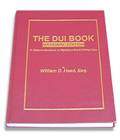


The FBI national arrest statistics for 2015 have not yet been released, but with new trends showing total DUI arrests dropping in America due to less police attention being dedicated to DUI enforcement, plus the remarkable emergence and acceptance of Uber and Lyft (and other mobile phone app-based car shuttle services) these annual DUI arrest numbers will likely be in the neighborhood of 1,000,000 DUI arrests for 2015, and will likely drop to about 900,000 for 2016, when the statistics for the calendar year 2016 are released.
Do you face a DUI arrest? Contact a top-reviewed DUI attorney near you right now to preserve your legal rights. Your first consultation is FREE, and also we will send you a FREE PDF copy of the 430-page “The DUI Book…A Citizen’s Handbook on Fighting a Drunk Driving Case.”
Call 1-888-839-4384 anytime day or night, including all major holidays. Our top drunk driving lawyers will explain what to do next.
